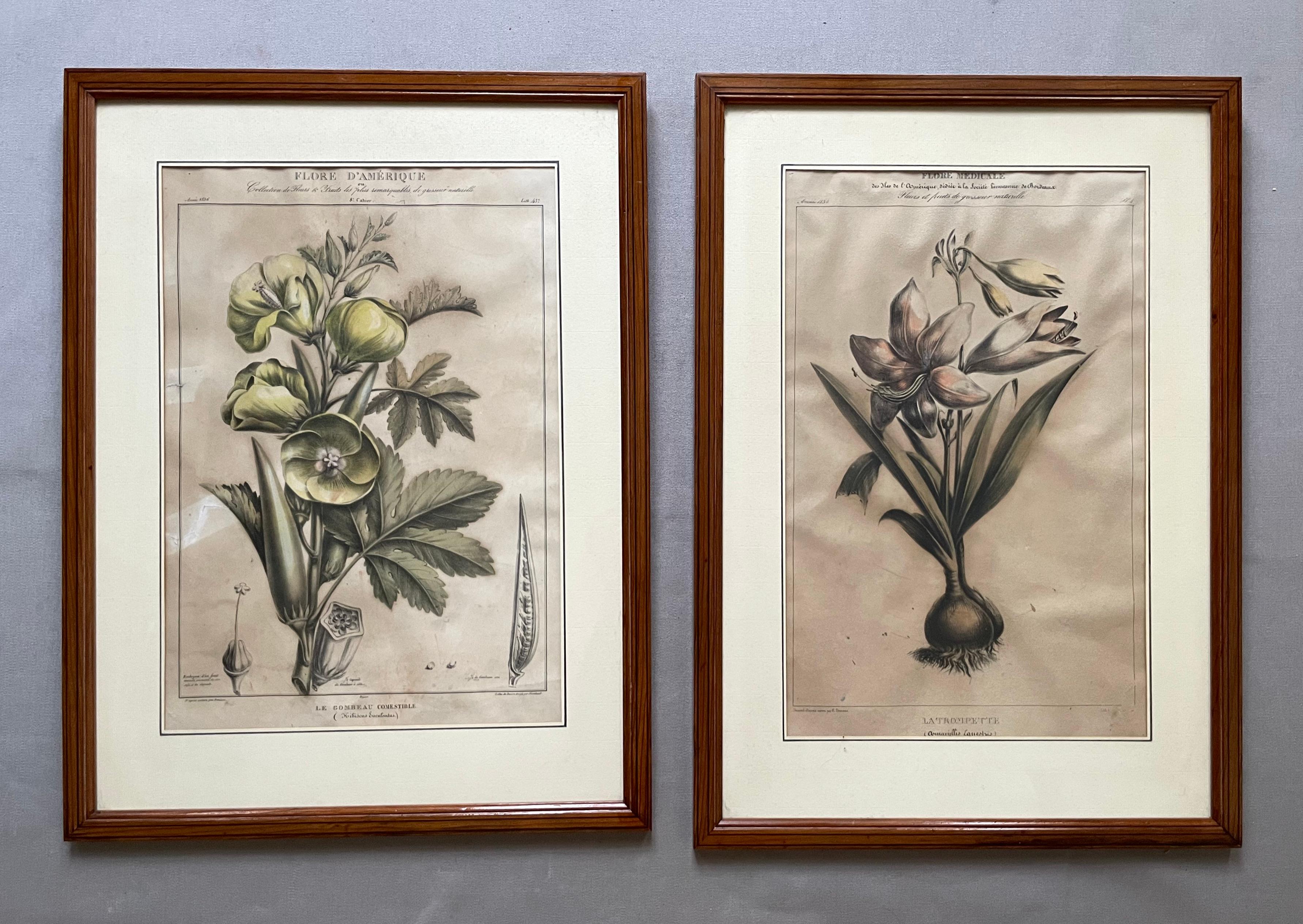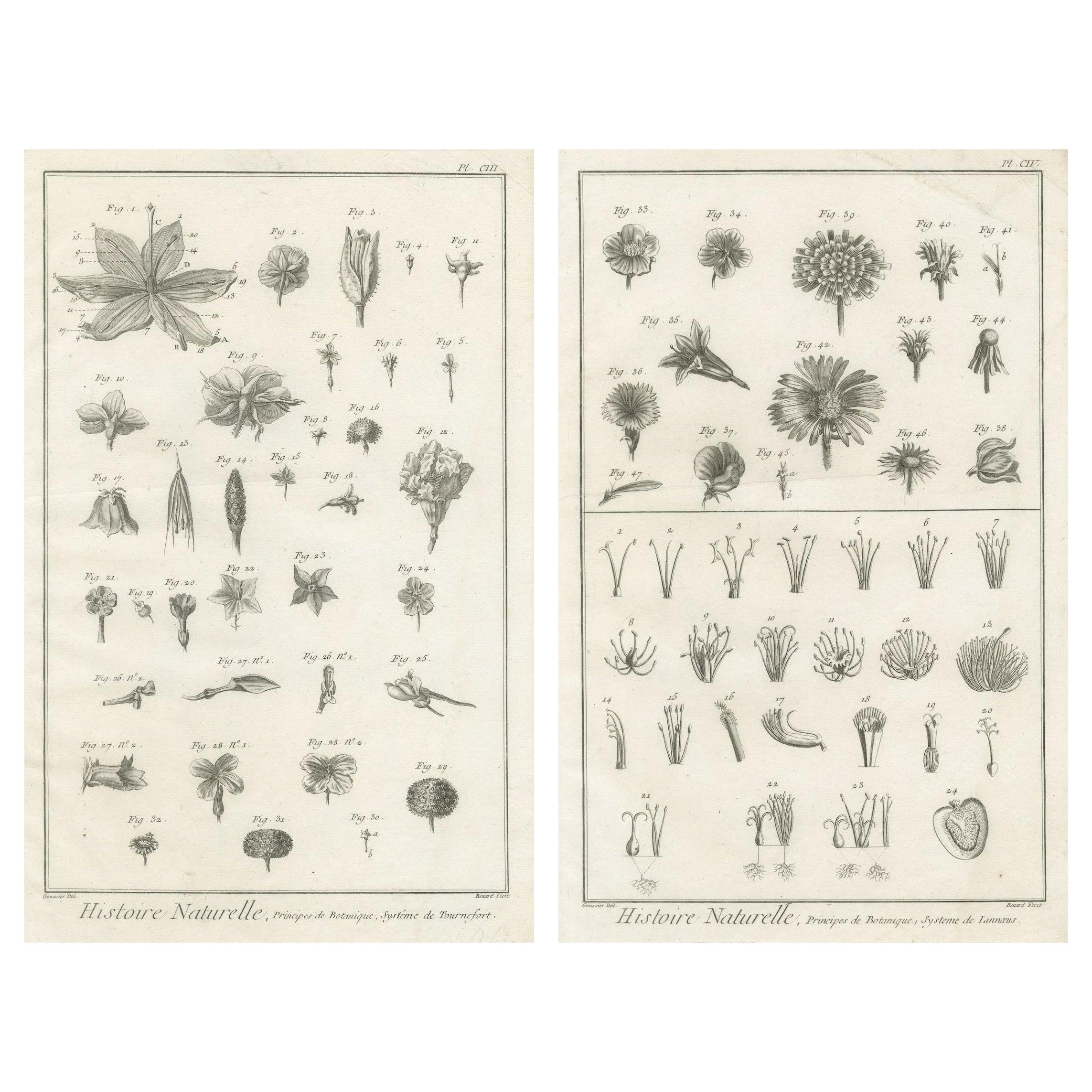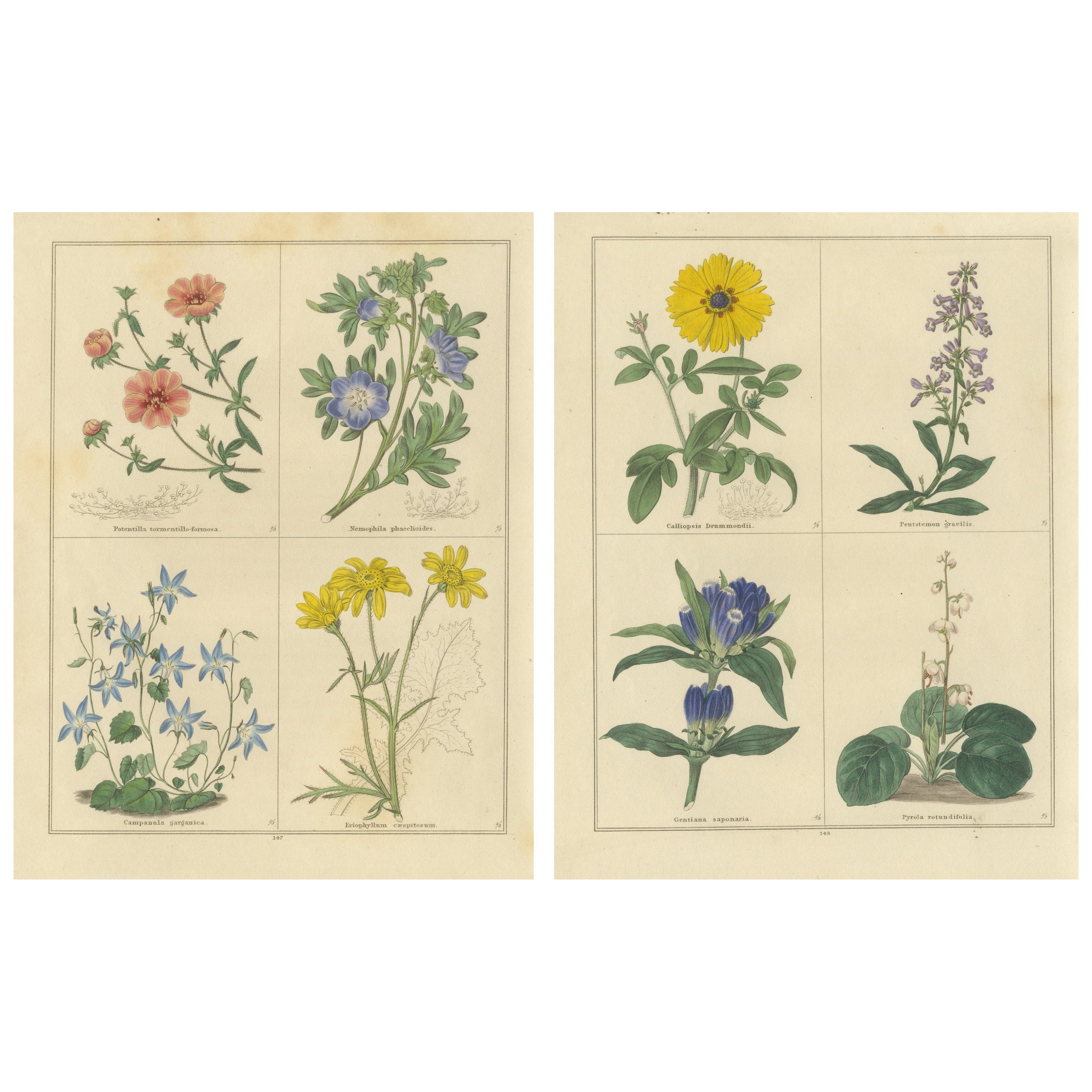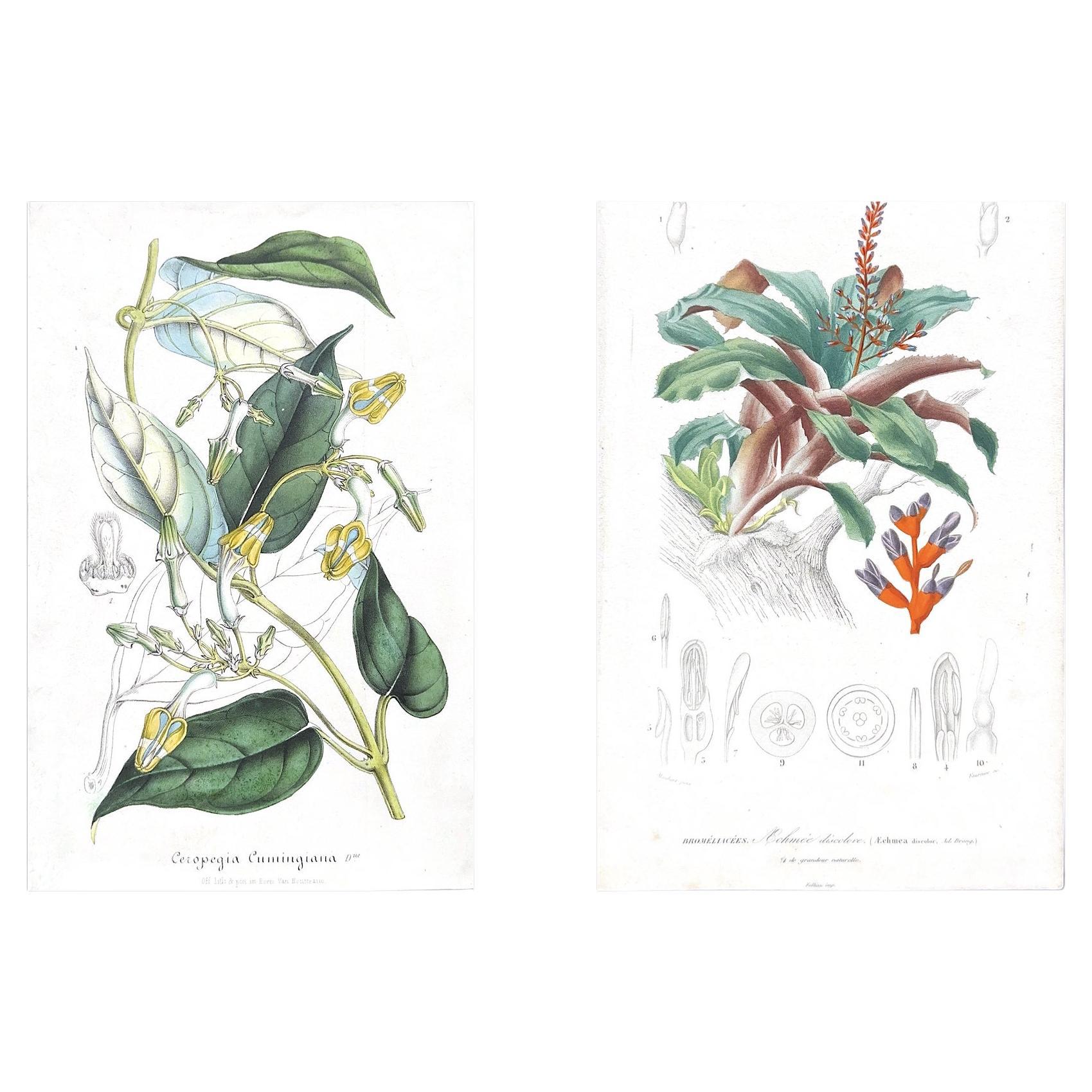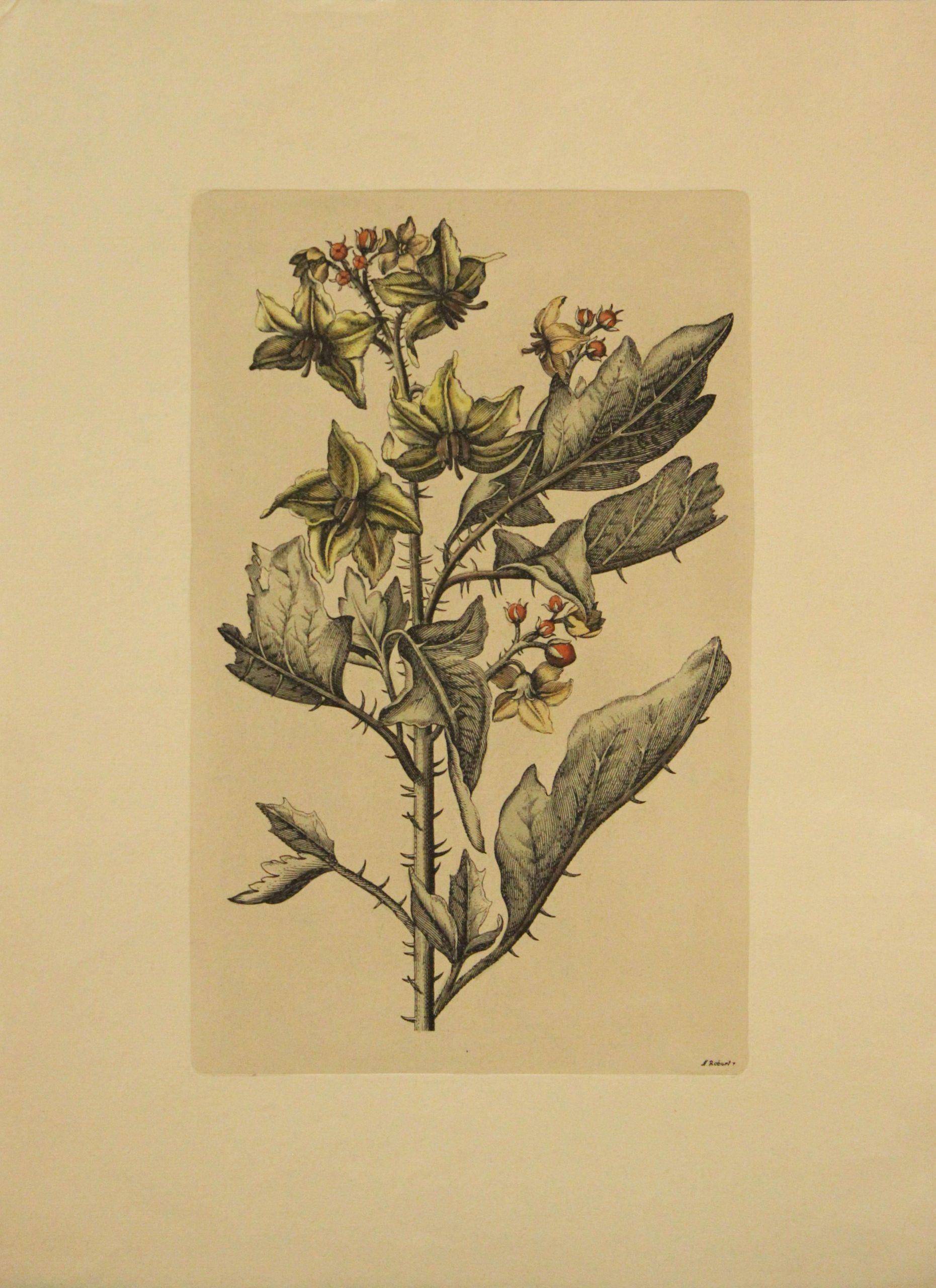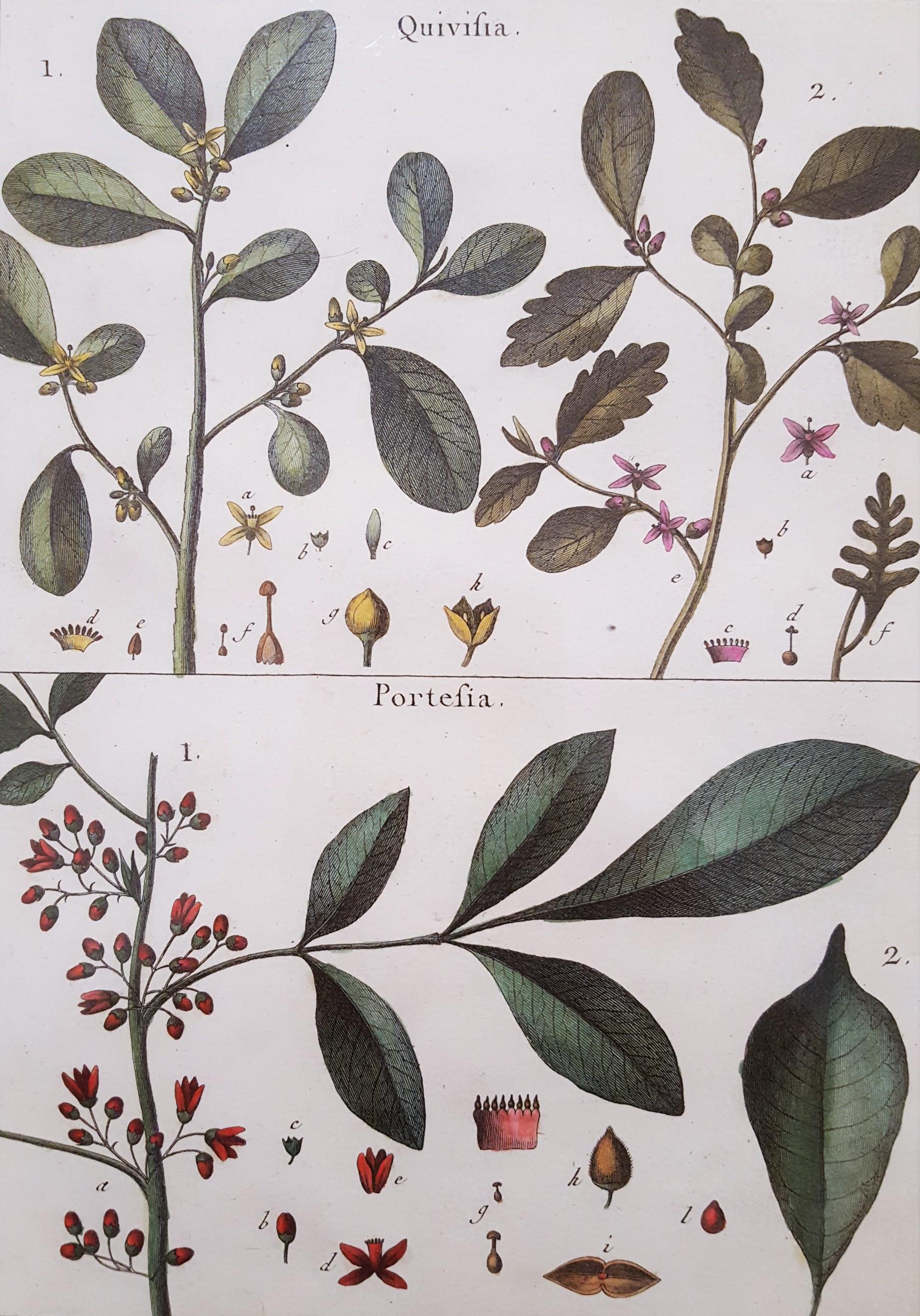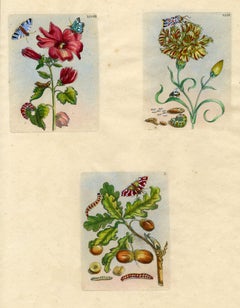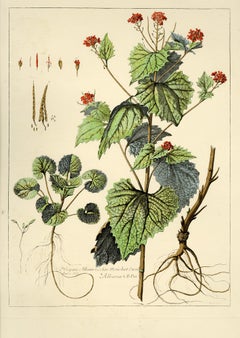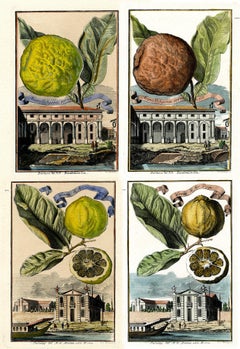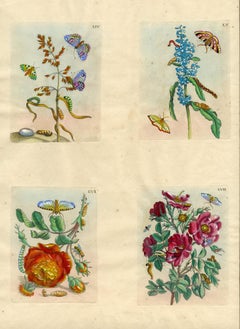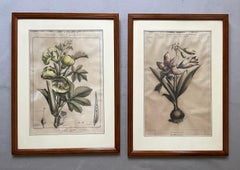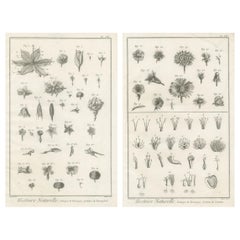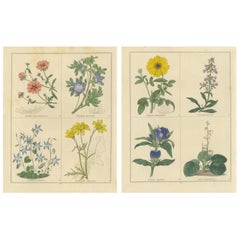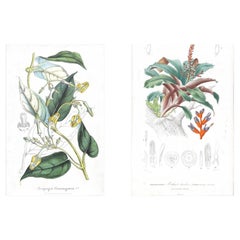Items Similar to Two botanical prints after Cornelisi Bloemaert & Vincenzo Leonardi
Want more images or videos?
Request additional images or videos from the seller
1 of 8
Cornelis BloemaertTwo botanical prints after Cornelisi Bloemaert & Vincenzo Leonardi1650
1650
$200
£152.30
€173.92
CA$281.02
A$308.34
CHF 162.42
MX$3,668
NOK 2,080.55
SEK 1,899.82
DKK 1,299.33
About the Item
Two botanical prints after Cornelis Bloemaert & Vincenzo Leonardi
"Lemon", from Hesperides. Reproductive print on thick C.M. Fabriano cotton wove paper; and Pierre Joseph Buchot (1731-1807), "Colcinthus Cucumus", reproductive print with handcolouring on thick Fabriano cotton wove paper; 22 x 14 3/4 inches (560 x 375 mm).
Cornelis Bloemaert (1603-1692), Vincenzo Leonardi (c1590-c1646).
- Creator:Cornelis Bloemaert (1602 - 1693)
- Creation Year:1650
- Dimensions:Height: 22.05 in (56 cm)Width: 14.77 in (37.5 cm)
- Medium:
- Movement & Style:
- Period:Late 17th Century
- Condition:
- Gallery Location:Middletown, NY
- Reference Number:Seller: BH15481stDibs: LU1979214728052
About the Seller
5.0
Vetted Professional Seller
Every seller passes strict standards for authenticity and reliability
Established in 2004
1stDibs seller since 2022
80 sales on 1stDibs
Typical response time: 22 hours
- ShippingRetrieving quote...Shipping from: Middletown, NY
- Return Policy
More From This Seller
View All3 plates from The Wondrous Transformation of Caterpillars & their Strange Diet..
By Maria Sibylla Merian
Located in Middletown, NY
Three plates from The Wondrous Transformation of Caterpillars and their Strange Diet of Flowers. “Wolfsmelk Rupsen;" “Wolfsmilch, Raupe und Schmetterling" Amsterdam: J F Bernard, 1730. Each an engraving with hand coloring in watercolor and gouache printed on one sheet of watermarked Honig cream laid paper, each measures 6 1/4 x 5 inches (157 x 121 mm), sheet measures 20 5/8 x 14 inches (522 x 355 mm), full margins. With handling creases in the lower right sheet quadrant, as well as minor, loose cockling, otherwise in very good condition. The colors are superb with exceptionally fresh and bright saturation. Engraved between 1679 and 1683, printed 1730. Plates included: XLVIII; XLIX & L.
MARIA SIBYLLA MERIAN was one of the most highly respected entomologists of the 17th century, and remains today one of the field's most significant figures. A German-born naturalist and scientific illustrator, she reared herself on the study of caterpillars, and made tremendous contributions to the knowledge of the life cycles of numerous species. Until her detailed and careful study of the process of metamorphosis it was thought that insects were "born of mud," through spontaneous generation.
Trained as a miniature painter by her stepfather, she published her first book of illustrations in 1675, at the age of 28. In 1679, Merian published the first volume of the two-volume series on caterpillars, The Wondrous Transformation of Caterpillars and their Strange Diet of Flowers; the second volume followed in 1683. Each volume contained 50 plates that she engraved and etched. In 1699, Merian traveled to Dutch Guiana...
Category
Early 18th Century Naturalistic Still-life Prints
Materials
Watercolor, Engraving
Group of seven (7) prints from Engravings of Plants + 1 Redouté
By Abraham Bosse
Located in Middletown, NY
Each a lithograph with hand coloring on watermarked Arches wove paper with a deckle edge. Each 16 1/4 x 12 1/4 (412 x 312 mm); sheet 26 x 19 3/4 inches (661 x 502 mm), each with full...
Category
Late 17th Century French School Still-life Prints
Materials
Watercolor, Lithograph
Aranzo Gigante Verrucoso & Limon di Fior Doppio, 4 prints
Located in Middletown, NY
Joseph de Montalegre (after)
Aranzo Gigante Verrucoso & Limon di Fior Doppio, 4 prints
1702-1725. Four (4) reproductive prints with handcoloring on thick C.M. Fabriano cotton wove ...
Category
Late 17th Century French School Still-life Prints
Materials
Watercolor, Handmade Paper
4 plates from The Wondrous Transformation of Caterpillars & their Strange Diet..
By Maria Sibylla Merian
Located in Middletown, NY
Four plates from The Wondrous Transformation of Caterpillars and their Strange Diet of Flowers. “Wolfsmelk Rupsen;" “Wolfsmilch, Raupe und Schmetterling" Amsterdam: J F Bernard, 1730. Each an engraving with hand coloring in watercolor and gouache printed on one sheet of watermarked Honig cream laid paper, each measures 6 1/4 x 5 inches (157 x 121 mm), sheet measures 20 5/8 x 14 inches (522 x 355 mm), full margins. With handling creases in the lower right sheet quadrant, as well as minor, loose cockling, otherwise in very good condition. The colors are superb with exceptionally fresh and bright saturation. Engraved between 1679 and 1683, printed 1730. Plates included: LIV, LV, LVI, & LVII.
MARIA SIBYLLA MERIAN was one of the most highly respected entomologists of the 17th century, and remains today one of the field's most significant figures. A German-born naturalist and scientific illustrator, she reared herself on the study of caterpillars, and made tremendous contributions to the knowledge of the life cycles of numerous species. Until her detailed and careful study of the process of metamorphosis it was thought that insects were "born of mud," through spontaneous generation.
Trained as a miniature painter by her stepfather, she published her first book of illustrations in 1675, at the age of 28. In 1679, Merian published the first volume of the two-volume series on caterpillars, The Wondrous Transformation of Caterpillars and their Strange Diet of Flowers; the second volume followed in 1683. Each volume contained 50 plates that she engraved and etched. In 1699, Merian traveled to Dutch Guiana...
Category
Early 18th Century Naturalistic Still-life Prints
Materials
Watercolor, Engraving
4 plates from The Wondrous Transformation of Caterpillars & their Strange Diet..
By Maria Sibylla Merian
Located in Middletown, NY
Four plates from The Wondrous Transformation of Caterpillars and their Strange Diet of Flowers. “Wolfsmelk Rupsen;" “Wolfsmilch, Raupe und Schmetterling" Amsterdam: J F Bernard, 1730. Each an engraving with hand coloring in watercolor and gouache printed on one sheet of watermarked Honig cream laid paper, each measures 6 1/4 x 5 inches (157 x 121 mm), sheet measures 20 5/8 x 14 inches (522 x 355 mm), full margins. With one 1.5 inch inch tear across the area of the top-left corner, well outside of image area. Handling creases in the lower right sheet quadrant, as well as minor, loose cockling, otherwise in very good condition. The colors are superb with exceptionally fresh and bright saturation. Engraved between 1679 and 1683, printed 1730. Plates included: CXXI, CXXII, CXXIII, & CXXIV.
MARIA SIBYLLA MERIAN was one of the most highly respected entomologists of the 17th century, and remains today one of the field's most significant figures. A German-born naturalist and scientific illustrator, she reared herself on the study of caterpillars, and made tremendous contributions to the knowledge of the life cycles of numerous species. Until her detailed and careful study of the process of metamorphosis it was thought that insects were "born of mud," through spontaneous generation.
Trained as a miniature painter by her stepfather, she published her first book of illustrations in 1675, at the age of 28. In 1679, Merian published the first volume of the two-volume series on caterpillars, The Wondrous Transformation of Caterpillars and their Strange Diet of Flowers; the second volume followed in 1683. Each volume contained 50 plates that she engraved and etched. In 1699, Merian traveled to Dutch Guiana...
Category
Early 18th Century Naturalistic Still-life Prints
Materials
Watercolor, Engraving
Cocoa plant, caterpillar, ..., Plate 26, Metamorphosis Insectorum Surinamensium
By Maria Sibylla Merian
Located in Middletown, NY
Metamorphosis Insectorum Surinamensium, Plate No. 26; Cocoa plant, caterpillar, pupa, and butterflies. The Netherlands: 1705. En...
Category
Early 18th Century Naturalistic Still-life Prints
Materials
Watercolor, Engraving
You May Also Like
Two Botanical Lithographs, Flora Of America
Located in SAINT-OUEN-SUR-SEINE, FR
Étienne DENISSE (1785-1861)
Gombeau Edible and Trompette.
Collection of the most remarkable Flowers and Fruits, natural size.
Two lithographs enhanced with watercolor.
Around 1830.
F...
Category
1830s Figurative Prints
Materials
Paper, Watercolor
Pair of Antique Botanical Engravings, Tournefort & Linnæus Systems, ca. 1770
Located in Langweer, NL
Pair of Antique Botanical Engravings, Tournefort & Linnæus Systems, ca. 1770
A rare pair of original copperplate engravings from Denis Diderot and Jean le Rond d’Alembert’s monument...
Category
Antique 1770s French Prints
Materials
Paper
Pair of Botanical Engravings from The Botanic Garden by B. Maund, London c.1836
Located in Langweer, NL
Pair of Botanical Engravings from The Botanic Garden by B. Maund, London c.1836
Description:
A delicate and finely preserved pair of hand-colored botanical engravings from Benjamin ...
Category
Antique 1830s British Prints
Materials
Paper
Set of Two Rare Botanical Engravings by D’Orbigny — 1849
Located in Fukuoka, JP
Set of Two Rare Botanical Engravings by D’Orbigny — Dictionnaire Universel d’Histoire Naturelle, Paris, 1849
An exquisite pair of original hand-colored botanical engravings from the...
Category
Antique 19th Century French Prints
Materials
Paper
(Title Unknown)-Botanical Print. Printed in Italy
By Nicholas Robert 1
Located in Chesterfield, MI
Botanical print. Plate-signed. Measures 22.25 x 16.375 in. Unframed. Printed in Italy. Good Condition.
Category
Late 20th Century Still-life Prints
Materials
Lithograph
Quivisia; Portesia /// Antique Botanical Botany Plants Science Engraving Buffon
By Georges-Louis Leclerc, Comte de Buffon
Located in Saint Augustine, FL
Artist: Georges-Louis Leclerc, Comte de Buffon (French, 1707-1788)
Title: "Quivisia; Portesia" (Octandreie, Monogynie, Plate 302)
Portfolio: Histoire Naturelle
Year: 1749-1789
Medium...
Category
1740s Old Masters Still-life Prints
Materials
Watercolor, Laid Paper, Engraving, Intaglio
More Ways To Browse
Botanical Print
Antique Botanical Prints
French Botanical Prints
Botanical Prints 17th Century
Month Flower Prints
Ohno Bakufu
Peter Max Marilyn
Shodo Kawarazaki
Shok 1
Walled Off Hotel Box Set
Warhol Flowers Blue
Wayne Thiebaud Lithograph
Wayne Thiebaud Pie
Wolfgang Stiller
Andy Warhol Committee 2000
Andy Warhol Flowers 1964
Andy Warhol Grapes
Brandon Osorio
